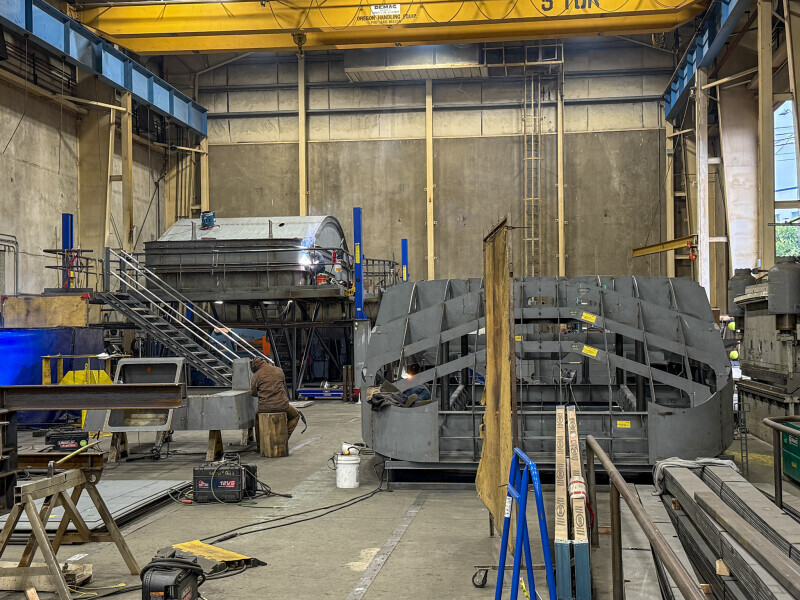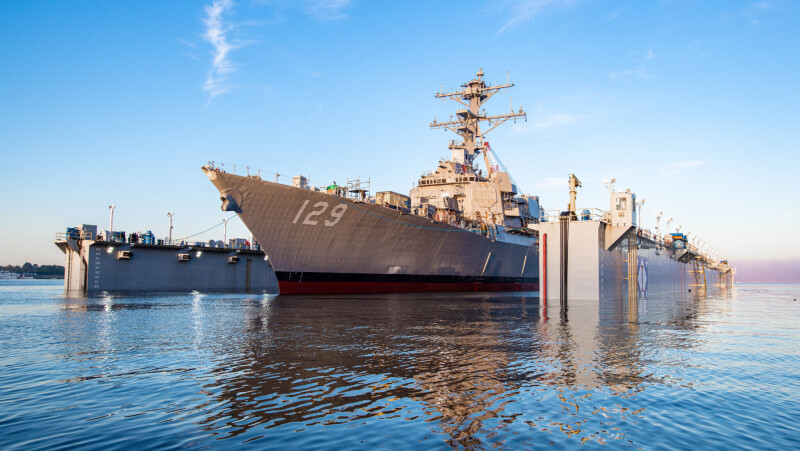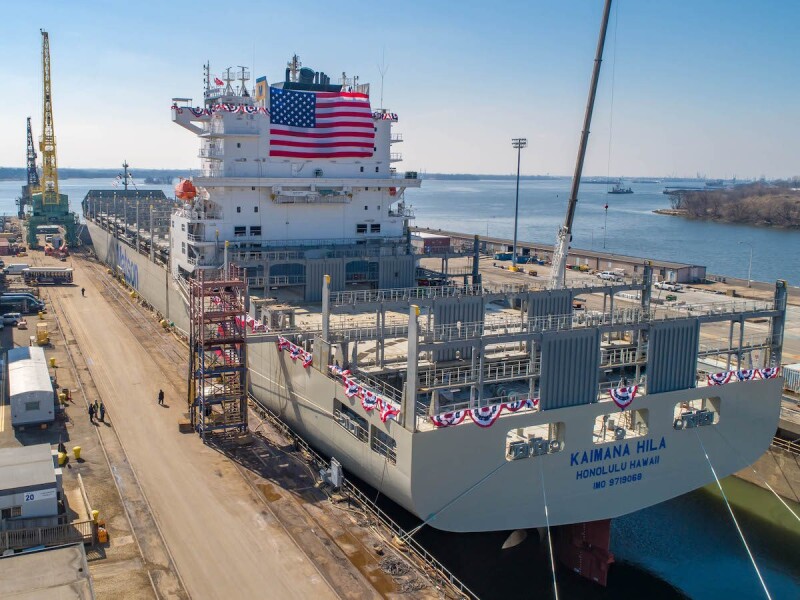A bipartisan group of lawmakers is making another push to bolster the U.S. maritime industry, reintroducing two bills that aim to rebuild domestic shipbuilding capacity, grow the U.S.-flagged fleet, and counter what they claim is China’s dominance in commercial shipping.
Sens. Mark Kelly (D-Ariz.) and Todd Young (R-Ind.), along with Reps. John Garamendi (D-Calif.) and Trent Kelly (R-Miss.), have brought back the Shipbuilding and Harbor Infrastructure for Prosperity and Security (SHIPS) for America Act, and its companion bill, the Building SHIPS in America Act. Together, the legislative package calls for regulatory reform, expanded cargo preference, workforce development, and tax incentives to spur ship construction and expand the U.S. merchant fleet.
The bill was first introduced in December, which earned large support from the maritime industry, and reintroduced on Wednesday, April 30.
The legislation follows a recent executive order signed by former President Trump titled Restoring America’s Maritime Dominance, which criticizes Chinese shipbuilding subsidies and directs federal agencies to create a Maritime Action Plan, including potential tariffs.
According to Sen. Kelly’s office, China currently builds nearly 50% of the world’s commercial ships, while the U.S. builds about 1%. Only 80 U.S.-flagged ships are active in international trade, and 17 of which are out of service due to crew shortages. China operates more than 5,500 such vessels, the Senator’s press release said.
WHAT THE SHIPS FOR AMERICA ACT DOES
The re-introduced SHIPS for America Act highlights a number of changes intended to strengthen federal maritime coordination and ensure sealift readiness. It would establish a White House Maritime Security Advisor and a Maritime Security Board to align policy across federal agencies. It also calls for the creation of a Maritime Security Trust Fund, financed by duties and penalties, particularly those levied on vessels connected to China and other adversarial countries.
To support the broader freight network, the legislation expands the scope of the National Freight Strategic Plan to include sealift and authorizes policy changes designed to crack down on what they claim are unfair foreign shipping practices. The act allows for direct hiring of key maritime roles within the federal government and instructs the U.S. Coast Guard to streamline compliance procedures while aligning more closely with international standards.
A central feature of the bill is the creation of a Strategic Commercial Fleet Program aimed at increasing the U.S.-flagged fleet to 250 vessels. These ships would need to be U.S.-built, U.S.-crewed, and capable of serving national defense interests. While temporary use of foreign-built ships would be permitted, that allowance would be phased out after fiscal year 2030.
The act is also intended to strengthen U.S. cargo preference rules by requiring that all federal cargo—up from the current 50%—be carried aboard U.S.-flagged vessels. This includes cargo originating from China. A new Ship America Office would be tasked with overseeing these policies and promoting U.S.-flagged shipping to consumers and commercial shippers alike.
Workforce provisions include modernization of mariner credentialing, licensing, and training systems; expanded access to GI Bill benefits and Public Service Loan Forgiveness for both mariners and shipyard workers; and added support for maritime academies. The bill also proposes granting the U.S. Merchant Marine Academy parity with the other federal service academies.
The legislation additionally seeks to improve Military Sealift Command recruitment and retention, integrate commercial best practices into Navy ship construction, and revise the 1851 Limitation of Liability Act to increase the legal exposure of foreign vessel operators in U.S. waters.

TAX INCENTIVES AND YARD REVITALIZATION
The Building SHIPS in America Act focuses on direct financial support for shipbuilding and shipyard infrastructure. It authorizes $250 million annually, from fiscal year 2026 through 2035, for domestic commercial shipbuilding projects. It also earmarks $100 million per year in grant funding for small shipyards, offering much-needed capital to upgrade facilities and retain skilled labor.
To incentivize ship construction, the act includes a 33% tax credit for building U.S.-flagged commercial vessels, with additional bonus credits for shipowners who use U.S.-based insurers and classification societies. Shipyards and maritime facility developers would also be eligible for 25% tax credits on infrastructure investments.
Innovation and R&D are a focus as well. The bill allocates $50 million annually for the creation of Maritime Innovation Incubators—regional centers focused on advancing ship design, alternative fuels, and resilient port infrastructure. It also reinforces the role of the National Shipbuilding Research Program and increases support for international academic exchanges in naval architecture.
To address strategic vulnerabilities, the package requires threat assessments of foreign logistics platforms such as China’s LOGINK system and mandates a streamlined environmental review process to accelerate maritime infrastructure development.

INDUSTRY IMPACT
Supporters of the legislation say it’s the most comprehensive overhaul of U.S. maritime policy in decades. For shipyards, operators, and the broader U.S. merchant marine, lawmakers note the bill is exptected to offer a path forward amid rising global competition and shrinking domestic capacity.
In support of the legislation, Marine Engineers Beneficial Association president Adam Vokac released a statement that read, “A resilient maritime industry is the backbone of a strong nation. We are proud to endorse the SHIPS for America Act, which represents one of the most significant investments in the U.S. merchant marine in decades and aims to address critical shortfalls in our nation’s maritime and shipbuilding sectors that have long been neglected.
The bills now head to committee for review in both chambers of Congress.




